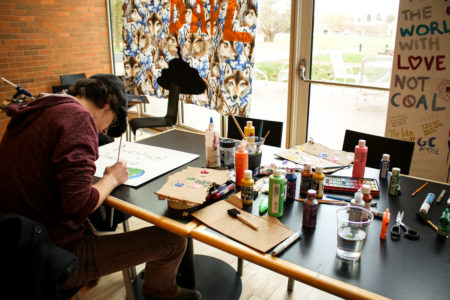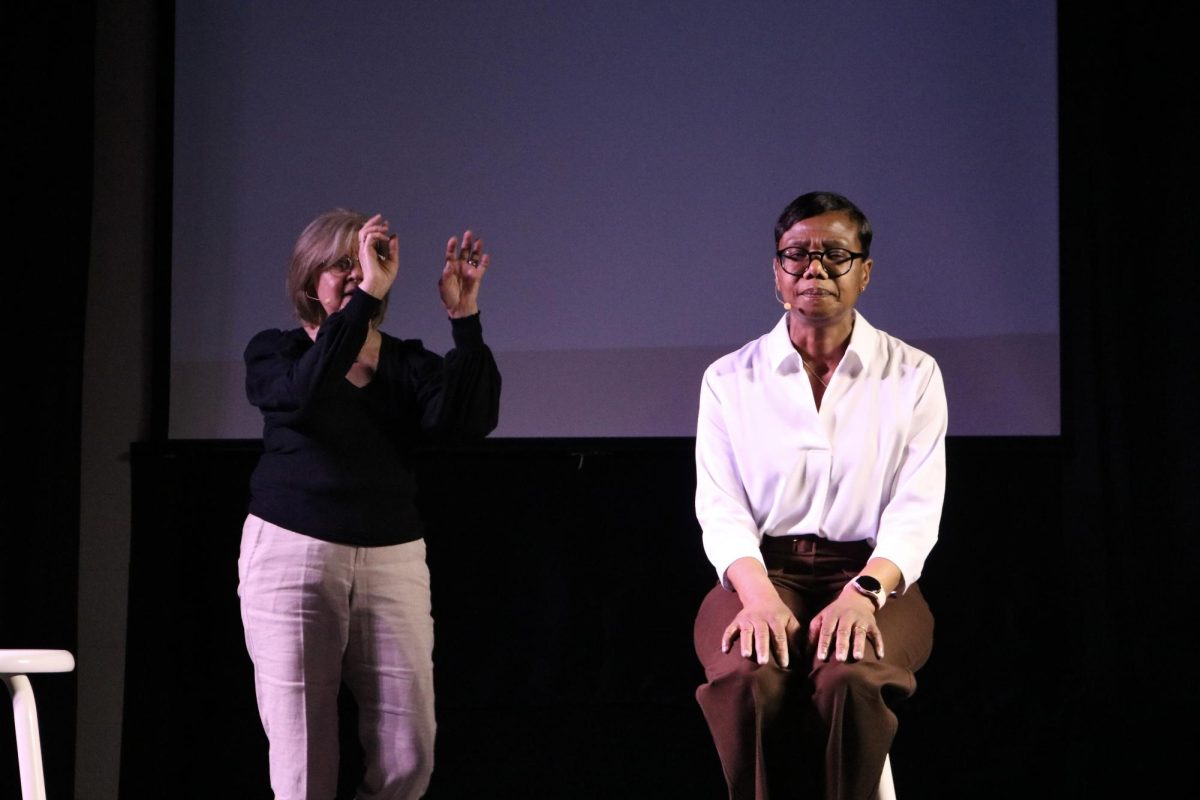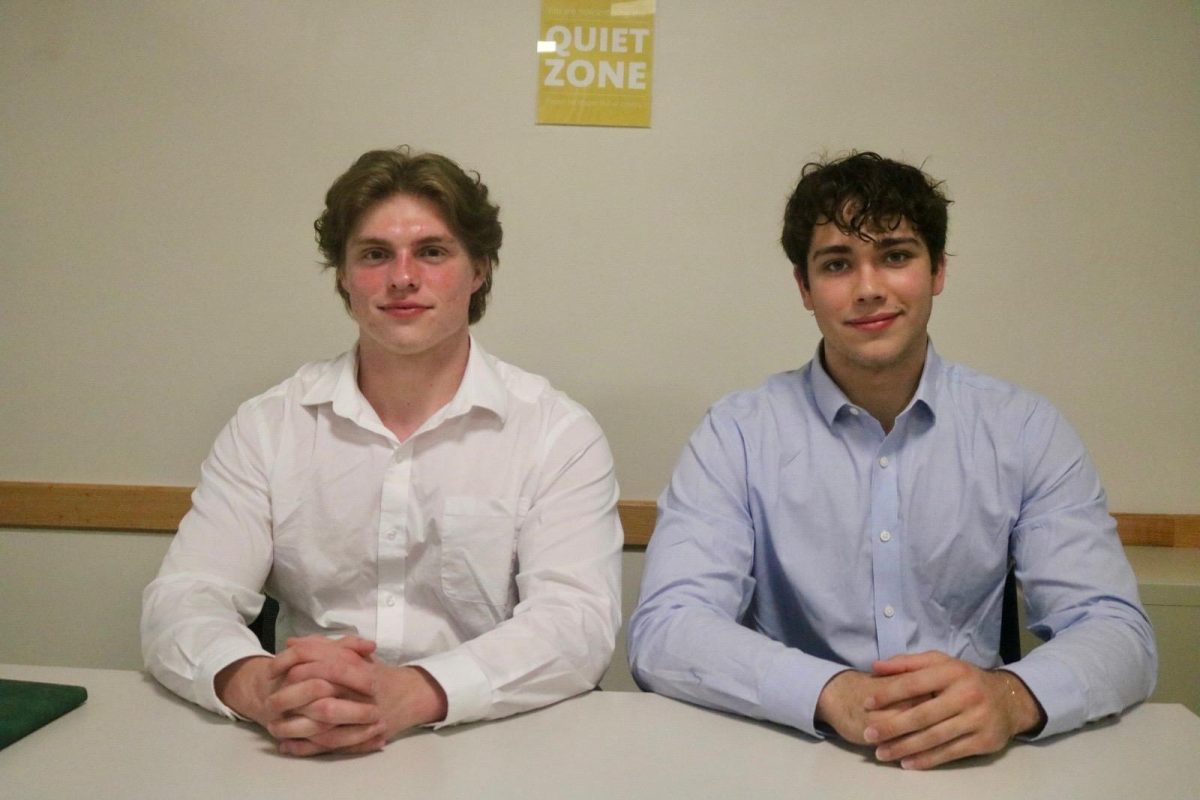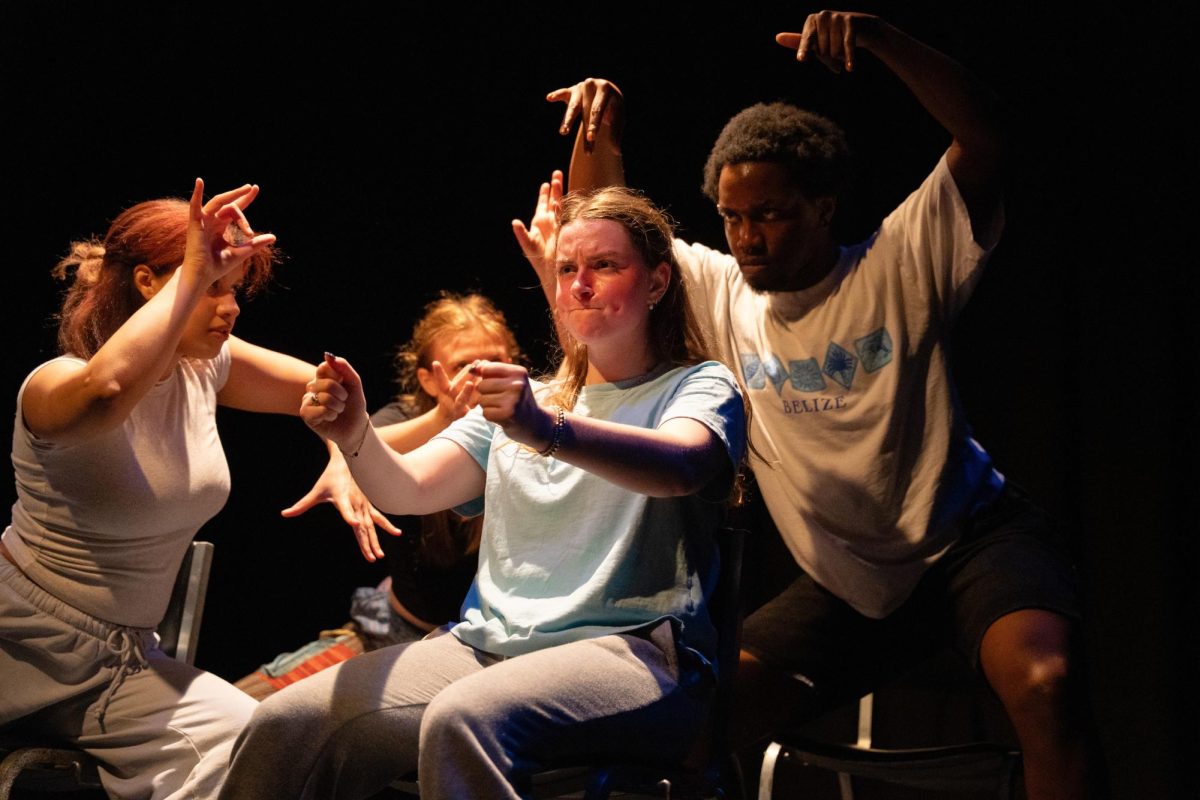By Amanda Weber
weberama@grinnell.edu
Grinnell Student Resistance held a Divest Day of Action on Monday, Nov. 6, which inspired conversation about the controversial issue of divestment on campus through a variety of venues — from rallies to talks in the D-Hall to, quite notably, art.
Divest Art took place in the Spencer Grill, and transformed the space into a hub of energy, information and action. The movement decorated the Grill’s walls and windows with banners and posters, including the “Wall,” a large poster covered in notes and sketches related to divestment and the environment. Tables were converted into stations to make signs for the rally later in the day, and to decorate binders for the trustees. Student band TGI Funkies also played, first building energy and drawing attention with their music and eventually transitioning to music-backed divestment chants. Essentially, it was a space for conversation, action and community to manifest through the shared medium of art.
“I think that art is very special in activism because it pushes people to engage physically, mentally and spiritually,” said Morgane Garnier ’19, an organizer for Grinnell Student Resistance. “I also just love how [art] brings people together and allows people to have a lasting expression.”
The event was the result of two months of considering the idea, followed by a month-and-a-half of focused planning. The organization and execution of the event was very much a group effort, involving fellow members of Student Resistance and organizations such as the Little Creek Movement.
“It’s a lot of parsing through ideas and just being in a room with people and being like, ‘Okay, what do you guys think of this? … How do we change this, how do we make this more effective, how do we even get people to be a part of the event much less show up?’” Garnier said.
The end result was an enthusiastic, welcoming event, which the movement hoped would be motivating and welcoming to all attendees.
“I know that not everyone is comfortable being at a rally and being loud and being around a lot of people, … so we’re trying to create space for everyone,” Garnier said.
However, for all of its more light-hearted and relaxed elements, the event was still a push for student action and administrative change. In this regard, Garnier considered the event a success.
“Our goals were to show that the students were engaged and care about the issue and to get to a space where we could dialogue with our trustees and our administration,” Garnier said. “I think that we successfully took the trustees on a journey that moved them to a different space in this discussion.”

Photo by Mahira Faran

















































